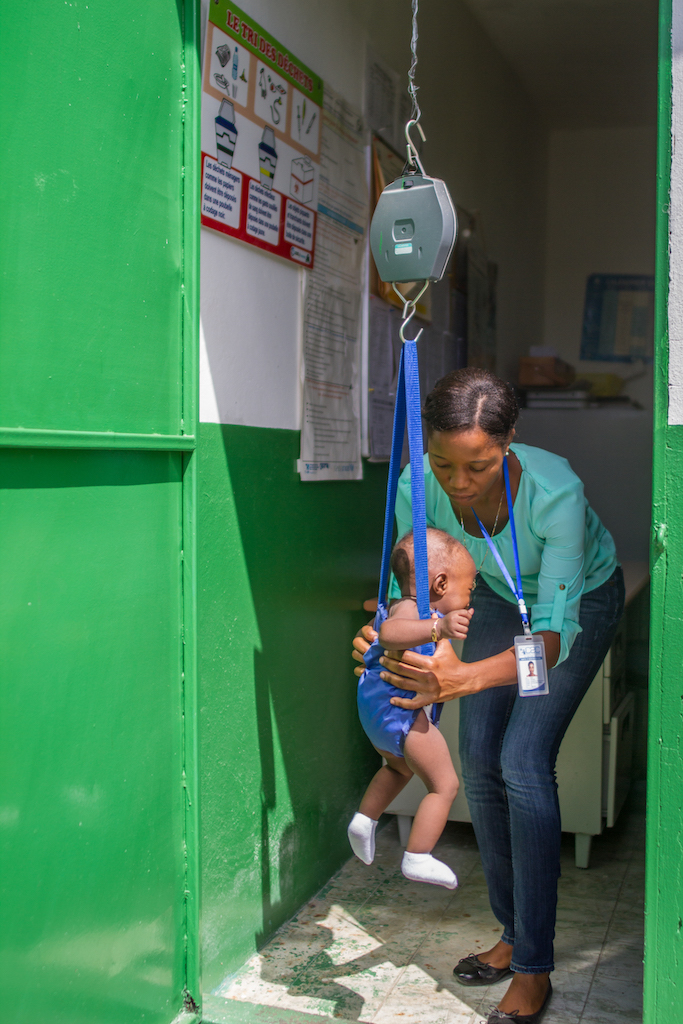Dear Friends of C2C,
Global hunger has increased over the past five years, and because of the novel coronavirus pandemic, an additional 83 to 132 million people around the world are expected to plunge deeper into food insecurity by the end of the year.
Food insecurity has grown worse in Haiti in the past year due to many factors, some of which include the closure of the border with the Dominican Republic, persistent inflation, the continued depreciation of the local currency, a rise in unemployment, and the effects of COVID-19.
Here at C2C, we currently operate a malnutrition program at our Acul du Nord clinic site. The program started four years ago to treat moderate and severe malnutrition in children between 6 months of age to 5 years old. Since its launch, we have treated over 350 children. However, with the magnitude of difficulties that are on the rise in Haiti, there is a higher prevalence of malnutrition in rural areas.

All across our clinics, we are seeing more and more malnourished children. The population that is most vulnerable to malnutrition come from lower-income households. These families have a hard time meeting the nutritional needs of their children, in terms of quality and quantity, which causes acute or chronic malnutrition. The majority of the children enrolled in C2C’s malnutrition program come from single mother-led families. Many of the mothers are unemployed and hope for financial support from the fathers. Some work in local markets selling diverse goods in an effort to sustain their families. To make matters worse, due to the devaluation of the local currency (gourde), basic staples such as rice, oil, beans, fruits, and vegetables are rapidly becoming more expensive. Just a year ago, 77 gourdes was equivalent to one US dollar. Now, one US dollar is worth 122 gourdes and is steadily increasing, which negatively impacts families that are getting less for their money. Children are eating fewer portions or being fed less healthy food that happens to be more affordable but without any nutritional value to reach satiety.
The increase in unemployment in Haiti has also been directly affected by COVID-19. While populations worldwide have suffered a plunge in the global economy, every household has certainly felt the effects of COVID-19 in Haiti, which is already the poorest country in the western hemisphere. The border to the Dominican Republic has been closed since March, reducing trade between the two countries, while the lack of tourism has affected tens of thousands of people. Due to the decrease in demand for services in Haiti, many businesses have been forced to lay off employees which also increases malnutrition cases due to less income generated per capita.
In addition to the increasing insecurity, inflation, and unemployment, many families worry about providing for their own as the government does not provide reliable electricity and the majority of households do not have refrigerators to store food. This means that they cannot buy in bulk and resort to buying food every day, which isn’t always a possibility when COVID-19 safety measures make it difficult to move around.
The World Food Programme estimates that the number of people in severe food insecurity in Haiti could rise from 700,000 to 1.6 million. With hurricane season in the Caribbean from June to November, there is an additional risk for which Haitian families need to prepare.
C2C plans to expand its malnutrition program and services to all of our rural clinics to reduce the burden on the communities that are facing severe food insecurity and are unable to meet their basic food needs, especially for their children.
Stay tuned to hear more updates about the expansion of the malnutrition program, our COVID-19 efforts in our clinics, and more!
